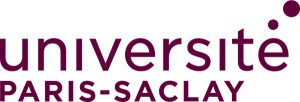Domain, Specialties : Laser-matter interaction
Keywords: Attosecond physics, Non linear optics, light-matter interaction
Research Unit : LIDYL / ATTO
Summary
The interaction between light and matter makes it possible to reveal the symmetry properties of matter. A particularly important case is that of chiral molecules, which exist in two forms that are mirror images of each other but cannot be superimposed. Circularly polarized light, left- or right-handed—i.e., carrying spin angular momentum—can distinguish between them. However, the interaction associated with this natural circular dichroism is often very weak and difficult to observe. Recently, by introducing the second intrinsic angular momentum of light, orbital angular momentum, a much stronger interaction in an extremely nonlinear regime has been predicted. This structured light field configuration, which exhibits local chirality, will be produced from an intense femtosecond laser beam. It will be used to generate attosecond pulses in an extremely nonlinear regime within selected chiral molecules. Their analysis will unveil a chirality-dependent response.
Full description
Advances in ultrafast optics and the control of strongly nonlinear light–matter interactions now make it possible to generate attosecond pulses (1 as = 10⁻¹⁸ s) through High-Harmonic Generation (HHG), in which a femtosecond laser pulse is converted into coherent XUV radiation (10–150 eV) [MdF+03]. These sources offer two major advantages: they provide access to sub-femtosecond electronic dynamics and allow probing of element-specific transitions that were once the exclusive domain of large-scale facilities such as synchrotrons. They thus open the way to studying phenomena such as photoionization delays [GBJG+16] or ultrafast demagnetization [FPP+22, FPS+25].
Meanwhile, recent developments in structured beams—and in particular the increasing interest in the longitudinal fields associated with tightly focused beams—are opening a new domain in optics. Traditional notions of polarization (spin angular momentum, SAM) or orbital angular momentum (OAM), defined as average values of macroscopic observables, are no longer adequate. Instead, one must consider a three-dimensional field, spatially inhomogeneous and evolving in time. Such a field may exhibit local chirality that can vary on the timescale of the optical cycle. Theoretical predictions show that in extremely nonlinear optics, such as high-harmonic generation, signatures of a sample’s chiral symmetry should appear when harmonics generated by such a field are analyzed. A key ingredient in synthesizing these fields is the superposition of several elementary harmonic beams (typically ω and 2ω) carrying appropriate OAM and SAM. Theoretical forecasts suggest countless potential applications, as the number of degrees of freedom of the fields expands from a single parameter (wavelength) to many. Furthermore, the signal is expected to be relatively strong, since it is obtained within the electric dipole approximation.
The Attophysics group at LIDYL, a pioneer in the generation, characterization, and use of attosecond pulses [MdF+03, KZR+13, BBBG+22], has recently developed sources driven by beams carrying spin angular momentum (SAM) [FHD+15] or orbital angular momentum (OAM) [GCA+16, GRA+17, CBA+19]. The former are suited to homogeneous molecular or magnetic systems, the latter to mesoscopic chiral structures. The combined use of SAM and OAM has made it possible to highlight the role of the generalized angular momentum of light in nonlinear optics [LVG+23].
This internship will build upon these advances to synthesize beams with spatial and temporal chirality, leveraging in particular the longitudinal component of the field. This work will support new attosecond physics experiments, both fundamental and applied, to be carried out during a potential PhD.
Bibliography:
- [BBBG+22] Bourassin-Bouchet, C. et al., 2022. Physical Review X, 10(3). http://¬dx.doi.org/-10.1103/¬physrevx.10.031048
- [CBA+19] Chappuis, C. et al., 2019. Physical Review A, 99(3). http://¬dx.doi.org/¬10.1103/-physreva.99.033806
- [CMH+11] Caillat, J. et al., 2011. Phys. Rev. Lett., 106, 093002. http://¬dx.doi.org/¬10.1103/-PhysRevLett.106.093002
- [FBV+21] Fanciulli, M. et al., 2021. Physical Review A, 103(1). http://¬dx.doi.org/¬10.1103/-physreva.103.013501
- [FHD+15] Ferré, A. et al., 2015. Nature Photonics, 9, 93. http://¬dx.doi.org/¬10.1038/-nphoton.2014.314
- [FPP+22] Fanciulli, M. et al., 2022. Physical Review Letters, 128(7), 077401. http://¬dx.doi.org/-10.1103/¬physrevlett.128.077401
- [FPS+25] Fanciulli, M. et al., 2025. Physical Review Letters, 134(15), 156701. http://¬dx.doi.org/-10.1103/¬physrevlett.134.156701
- [GBJG+16] Gruson, V. et al., 2016. Science, 354(6313), 734. http://¬dx.doi.org/¬10.1126/-science.aah5188
- [GCA+16] Géneaux, R. et al., 2016. Nature Communications, 7, 12583. http://¬dx.doi.org/-10.1038/¬ncomms12583
- [GRA+17] Gauthier, D. et al., 2017. Nature Communications, 8, 14971. http://¬dx.doi.org/-10.1038/¬ncomms14971
- [HCB+10] Haessler, S. et al., 2010. Nature Physics, 6(3), 200. http://¬dx.doi.org/¬10.1038/-NPHYS1511
- [HFH+09] Haessler, S. et al., 2009. Phys. Rev. A, 80(1), 011404. http://¬dx.doi.org/¬10.1103/-PhysRevA.80.011404
- [KZR+13] Kim, K.T. et al., 2013. Nature Photonics, 7, 651. http://¬dx.doi.org/¬10.1038/-nphoton.2013.170
- [LFC+25] Luttmann, M. et al., 2025. Optical spin-orbit interaction induced by magnetic textures. http://¬dx.doi.org/¬10.48550/¬arxiv.2506.15232
- [LVG+23] Luttmann, M. et al., 2023. Science Advances, 9(12). http://¬dx.doi.org/¬10.1126/-sciadv.adf3486
- [MdF+03] Mairesse, Y. et al., 2003. Science, 302(5650), 1540. http://¬dx.doi.org/¬10.1126/-science.1090277
- [VLG+23] Vimal, M. et al., 2023. Physical Review Letters, 131(20), 203402. http://¬dx.doi.org/-10.1103/¬physrevlett.131.203402
Location
CEA Saclay, Site de l’Orme des merisiers (91) Essonne, France
Internship conditions
- Internship duration: 4 months
- Level of study: Bac+4/5
- Training: Master 2
- Continuation in PhD thesis: Yes
- Application deadline: 1 février 2026
Experimental skills
Language : English
Useful methods and technics:
During this internship, the selected candidate will set up an interferometer on an intense femtosecond laser in order to study, during attosecond pulse generation, the role of the coupling between the orbital and spin angular momenta of light. This experimental internship involves concepts from nonlinear optics, quantum optics, and laser–matter interaction.
The intern will gain hands-on experience with the optics of intense femtosecond lasers. They will also study the strong-field physics processes underlying high-harmonic generation. Finally, theoretical developments may also be included depending on the candidate’s interests. Continuing on to a PhD after the second year of the Master’s program (M2) is possible.
Skills
Skills in optics, atomic and molecular physics will be appreciated for a M2 student.
Computer languages and software:
The entire work will be interfaced and analysed with Python, in particular PyMoDaq.
Links
- laboratory’s web page: https://iramis.cea.fr/lidyl/atto/
- Supervisor’s web page: Thierry Ruchon
- Lien : https://iramis.cea.fr/lidyl/atto/lumiere-xuv-attoseconde-structuree/
Internship supervisor
Thierry RUCHON
Phone: +33 1 69 08 70 10
Email :
Responsable du laboratoire LIDYL / ATTO
Pascal Salieres
Phone: 0169087010



